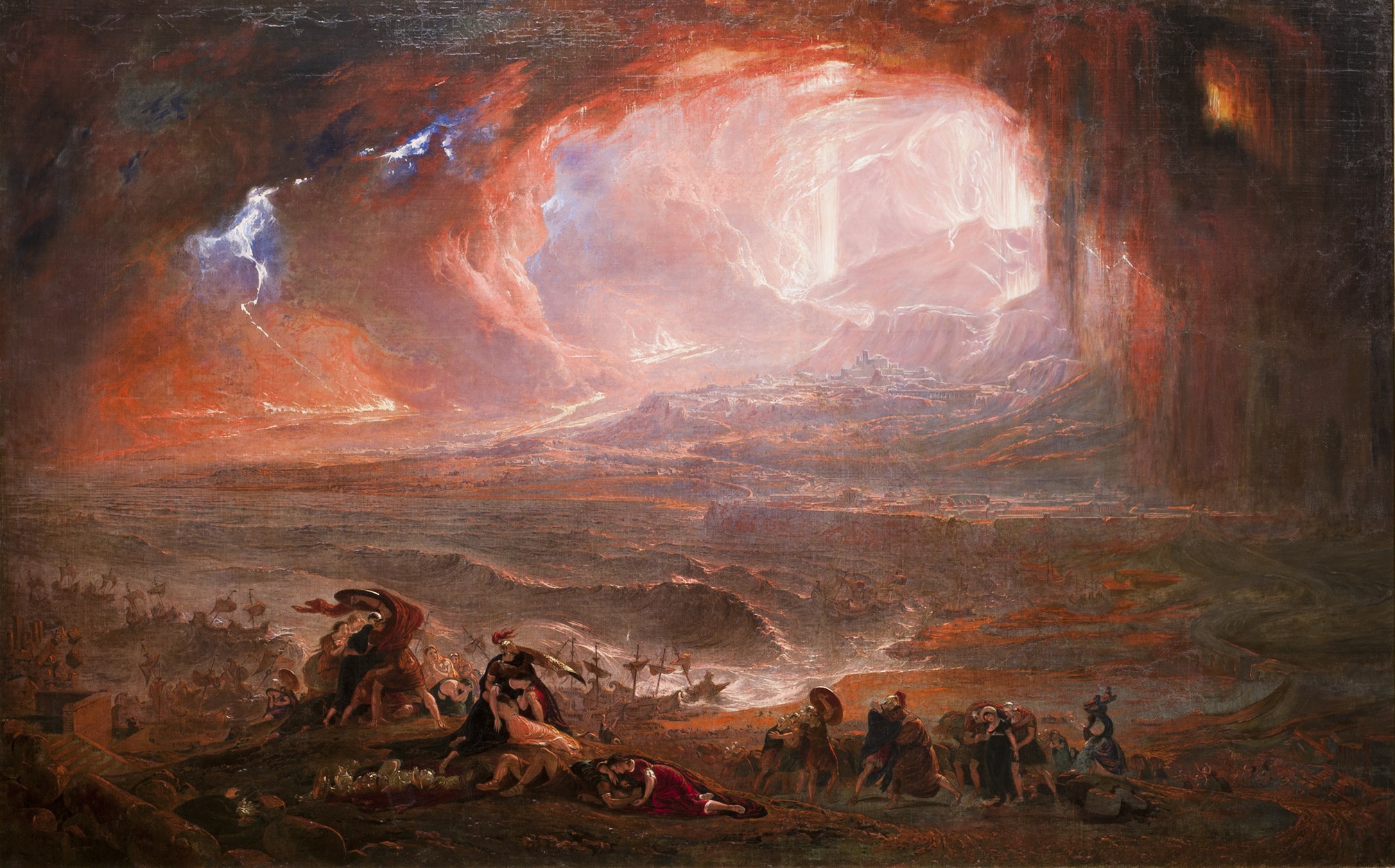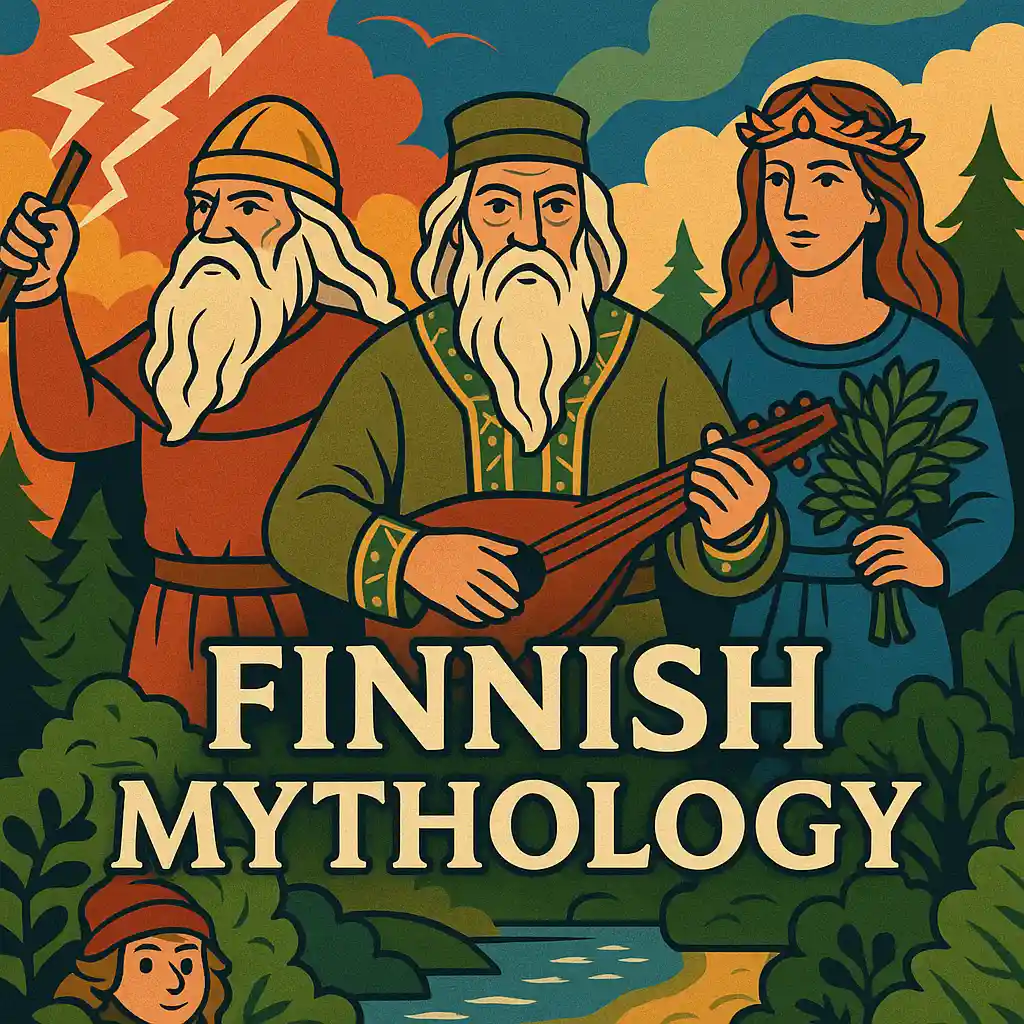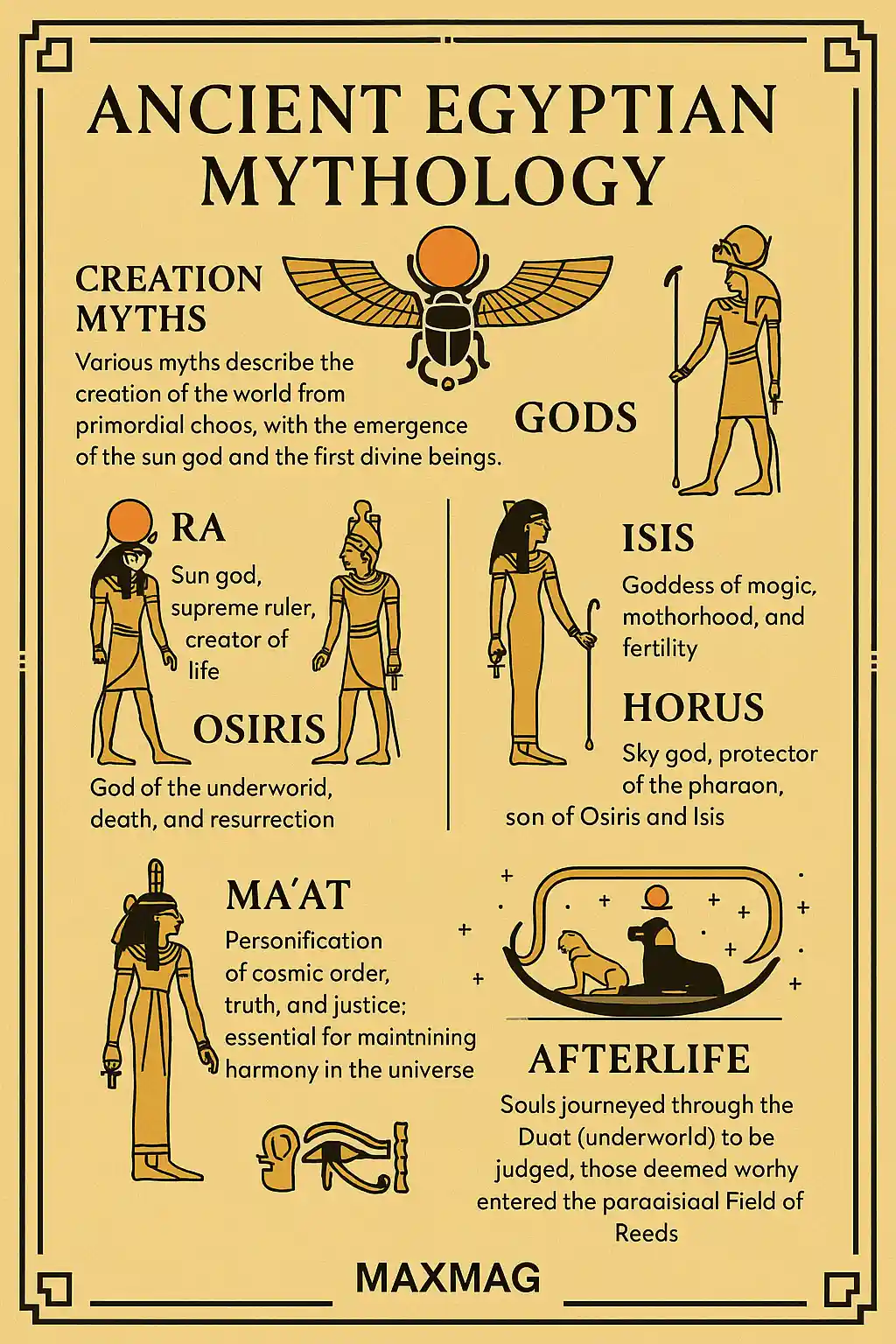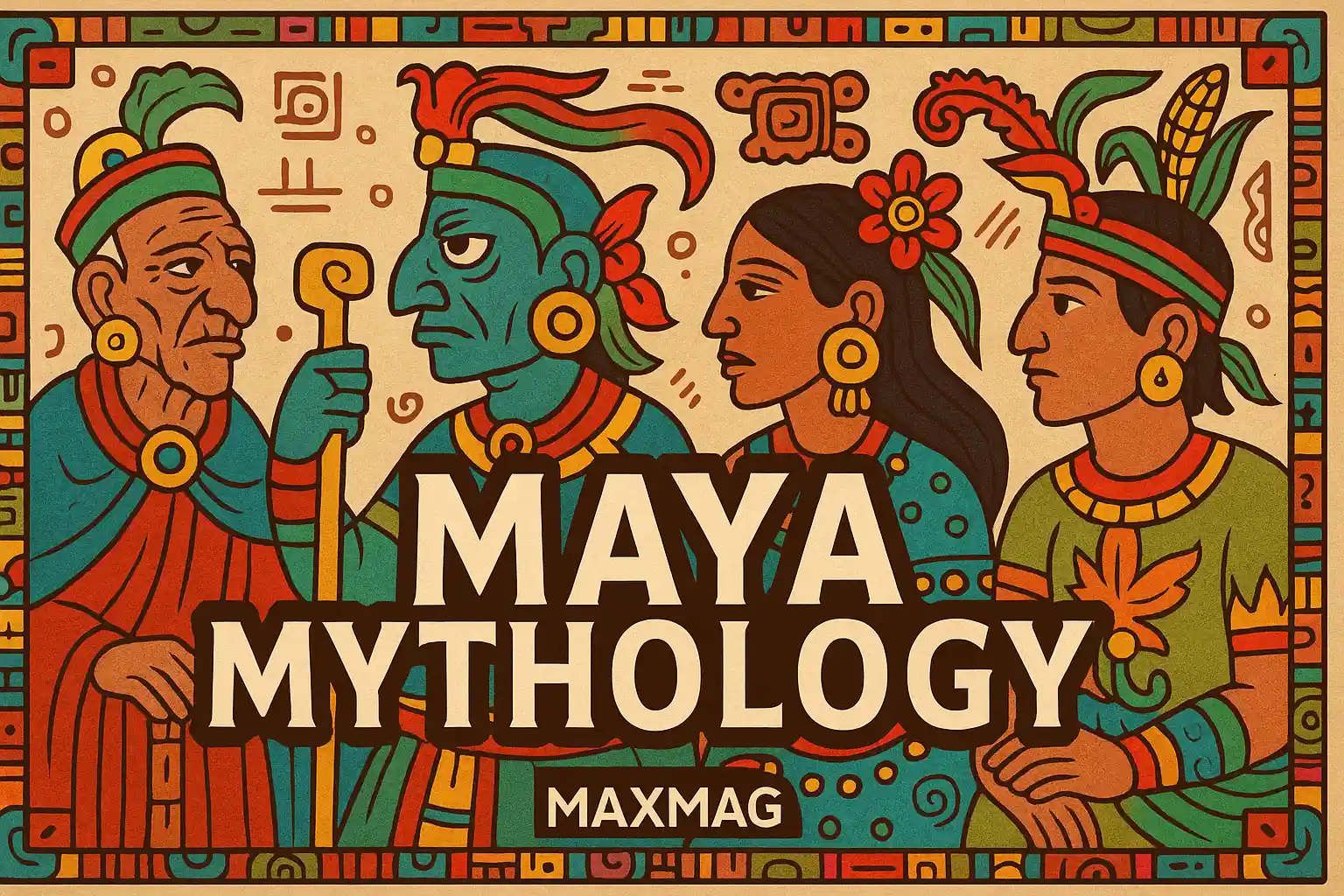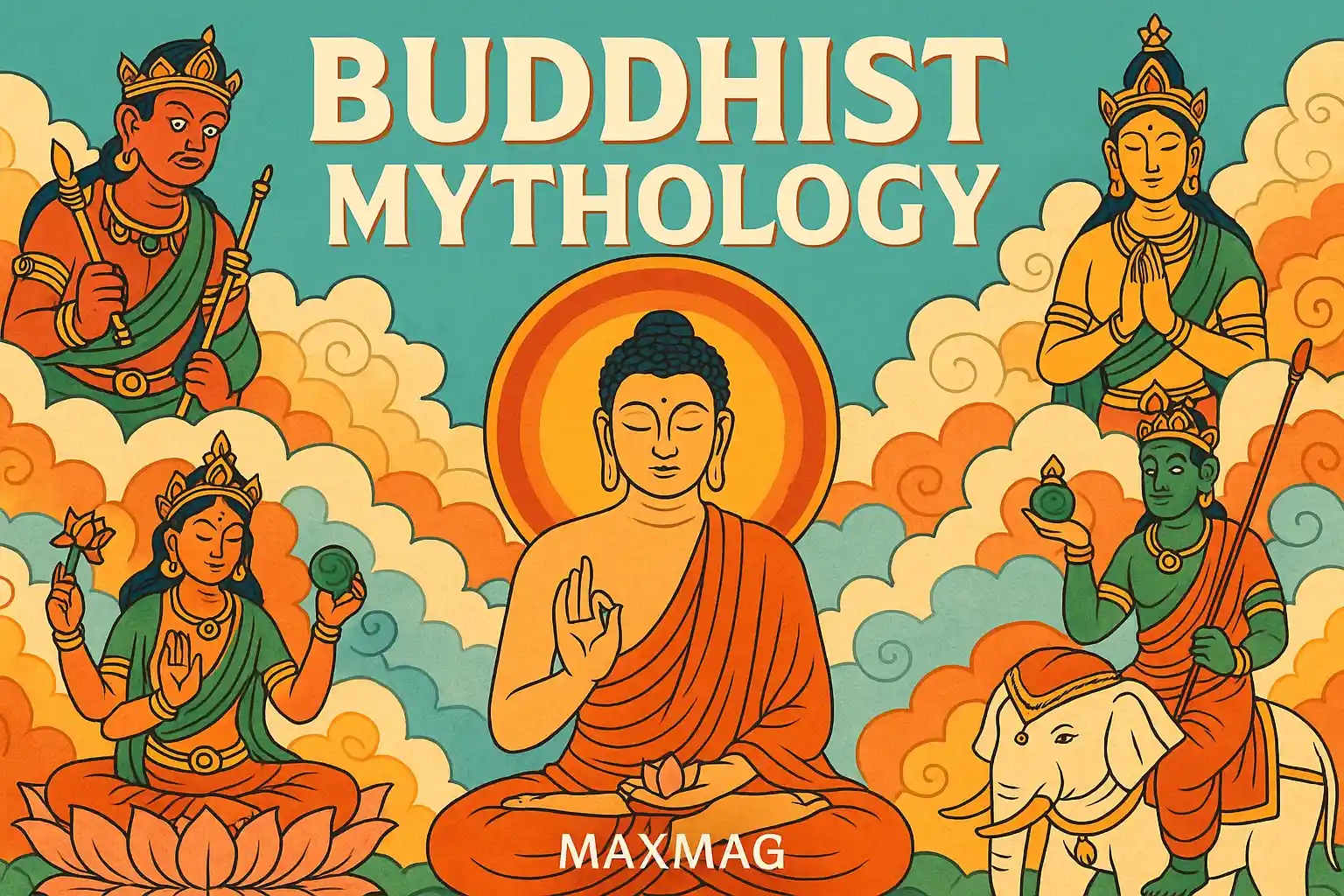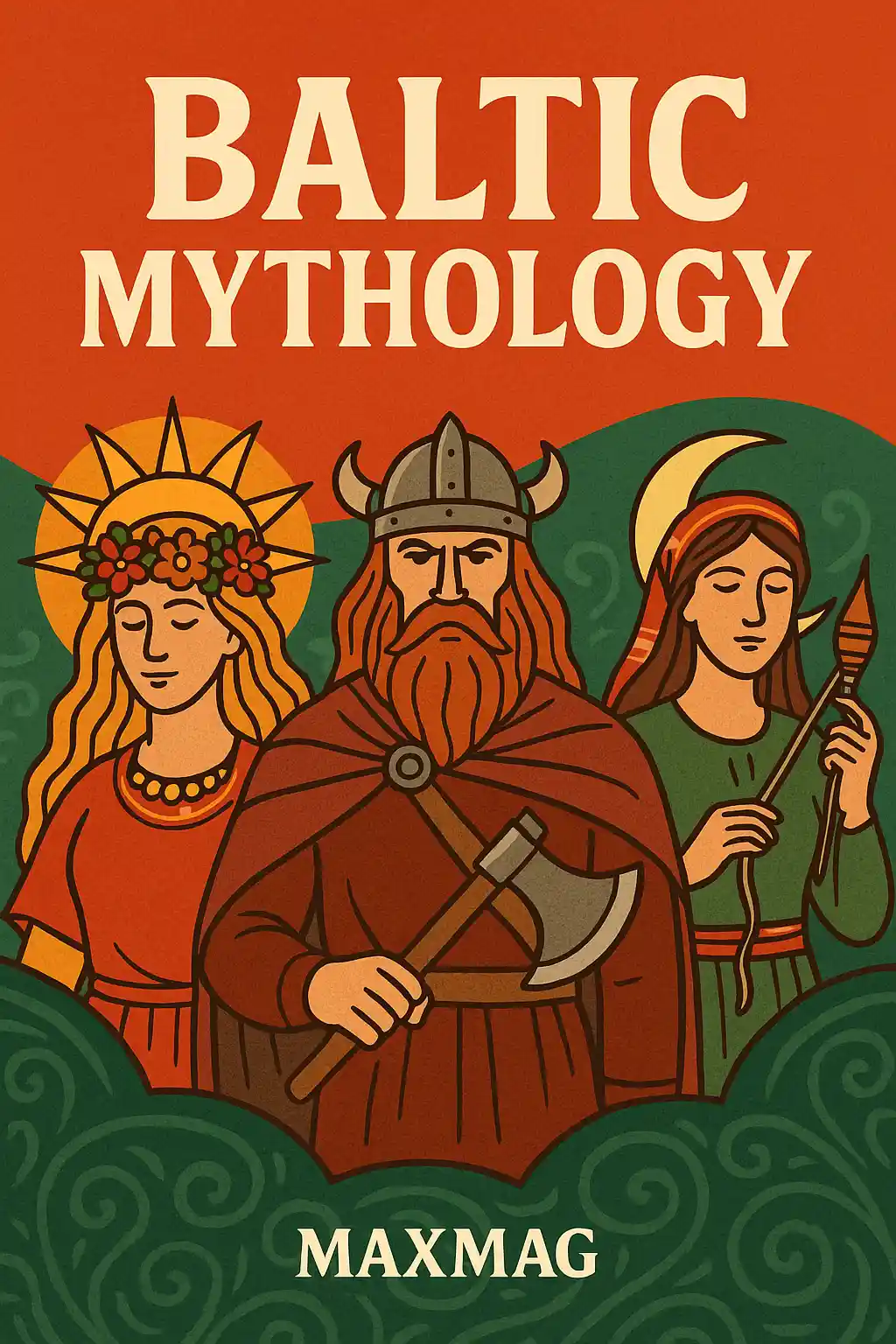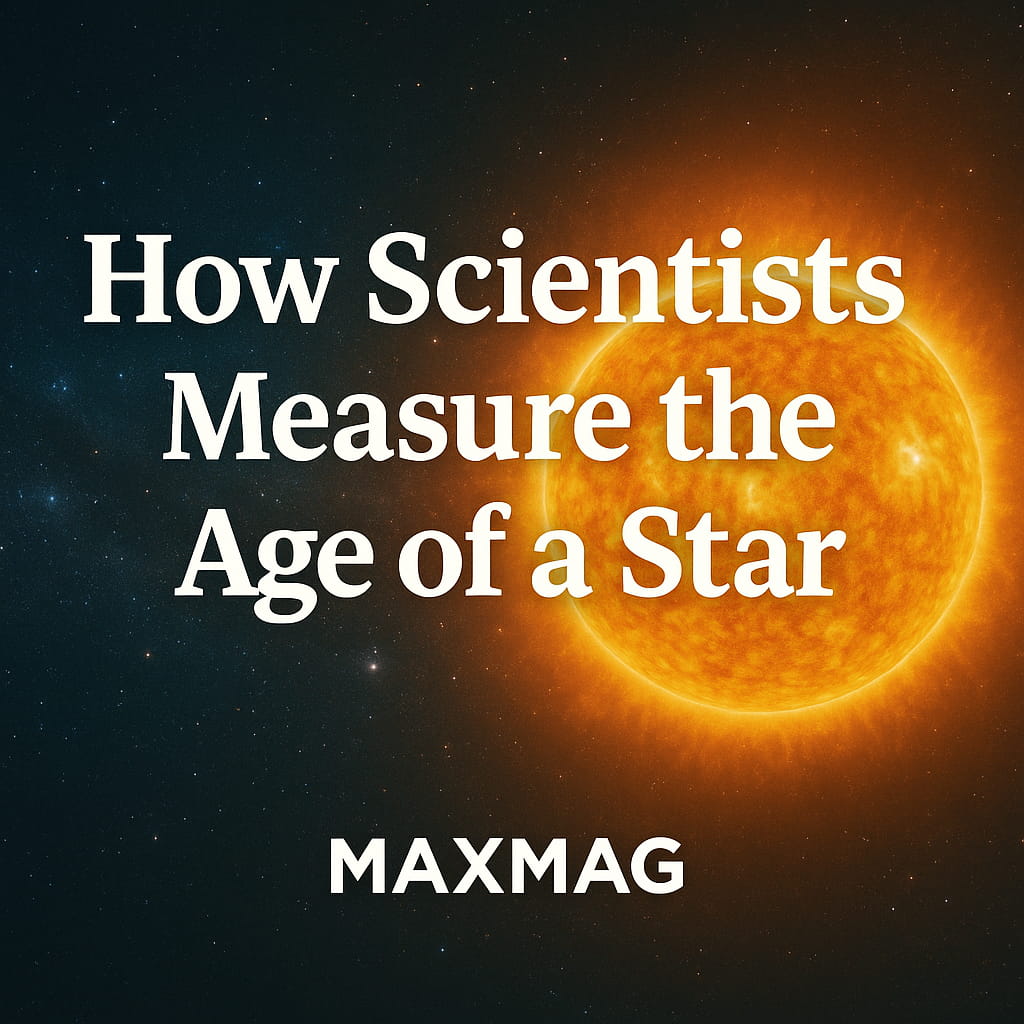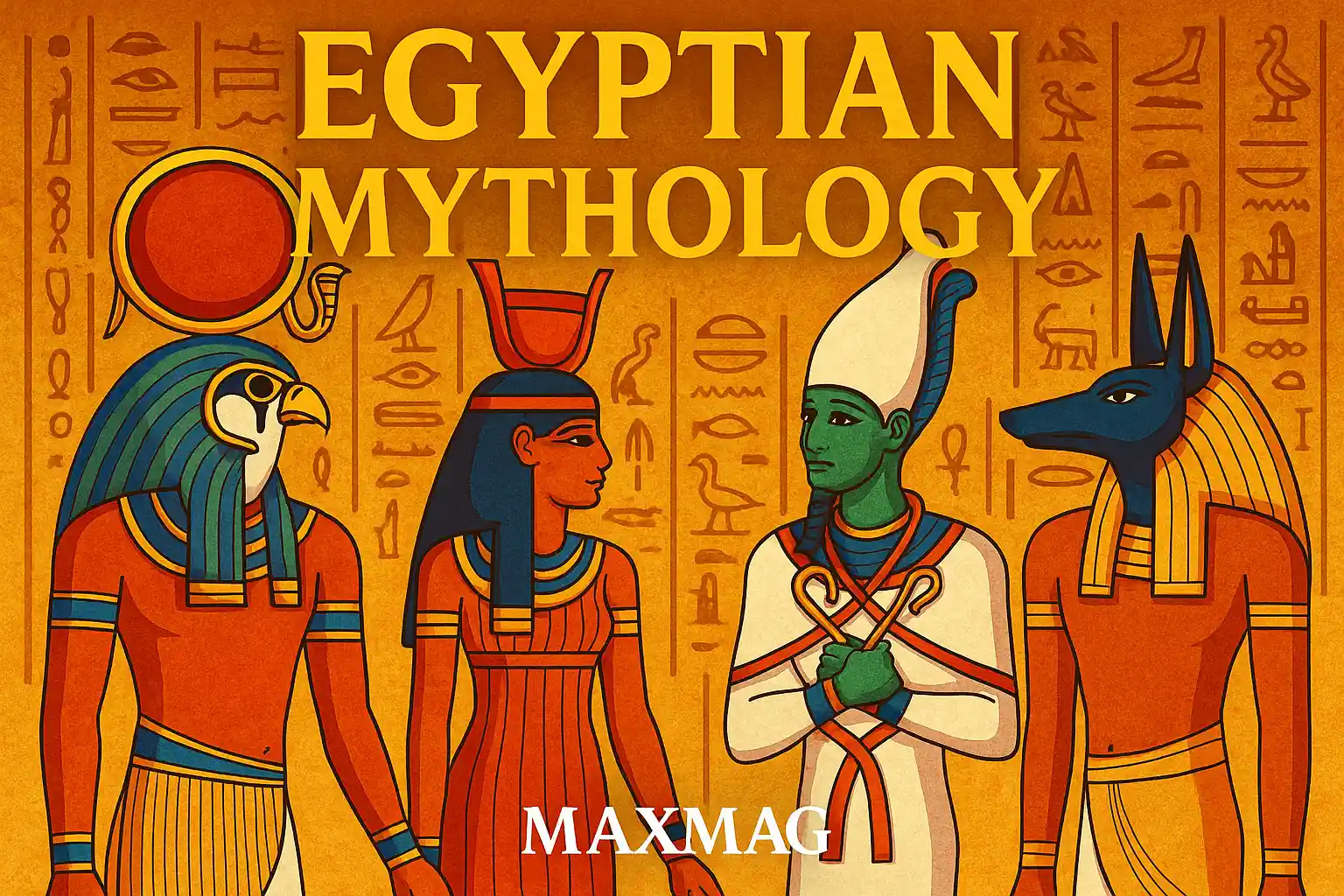
Ancient Egyptian mythology isn’t merely a collection of myths. It is the philosophical and spiritual foundation of one of the longest-lasting civilizations in human history. These narratives structured reality for the Egyptians. From the architecture of temples to the flow of daily life, myth provided both explanation and guidance.
For the ancient Egyptians, the world was not static—it was in constant flux between chaos and order. Their gods were not distant creators but living forces within nature, responsible for the Nile’s flood, the rising sun, the seasons, and moral justice. The myths served as an ongoing dialogue with these forces and offered models for kingship, ethics, and cosmology that endured over three millennia.
The Mythic Landscape of Ancient Egypt
Egypt is a land divided by geography and united by myth. The Nile River, snaking through desert lands, was not only the lifeblood of Egypt’s agriculture but also a cosmic symbol—a reflection of divine order flowing through earthly existence.
Temples rose in both Upper and Lower Egypt, each aligned with specific gods and their myths. These regional centers gave rise to localized theology—Heliopolitan, Theban, Memphite, Hermopolitan—each with its own version of the creation myth, yet all supporting the universal idea that the universe emerged from Nun, the chaotic primordial water.
The benben, a sacred mound that rose from Nun, became the origin point for creation. This mound was mirrored in obelisks and pyramidal temple tops, reinforcing the myth in stone.
Creation Myths: Different Paths to the Same Cosmos
Egyptian theology offers several parallel creation myths, each rooted in its city of origin:
Heliopolitan Theology – The Ennead
At Heliopolis, the universe begins with Atum, the self-engendered god who creates Shu (air) and Tefnut (moisture). These gods produce Geb (earth) and Nut (sky), who give birth to Osiris, Isis, Set, and Nephthys. These nine deities form the Ennead, a family whose dynamics drive much of Egyptian mythology—especially the tale of Osiris.
Memphite Theology – The Word of Ptah
In Memphis, the god Ptah creates the world not through offspring, but through thought and speech. Everything exists first in his heart (the seat of mind), then manifests when spoken aloud. This concept ties myth to language, architecture, and intellectual power, making Ptah the patron of craftsmen, artists, and builders.
Hermopolitan Cosmogony – The Ogdoad
Hermopolis presents a myth based on four divine male-female pairs (the Ogdoad) who represent chaotic elements: darkness, invisibility, and infinity. These entities stir the primordial waters, forming the cosmic egg or lotus from which the sun god is born.
All these myths agree on key principles: the world is born from chaos, divine forces shape it, and balance (ma’at) must be constantly maintained.
The Supreme Role of Ma’at
Ma’at is not a deity in the typical sense—it’s a universal principle representing truth, balance, order, and justice. Personified as a goddess wearing a feather, Ma’at is present in every myth, judgment, and ritual.
Pharaohs were called the “Beloved of Ma’at” and were expected to uphold this cosmic order. In daily life, Egyptians were judged by their adherence to Ma’at—not by blind obedience, but through moral behavior, truthfulness, and respect for nature and community.
In the afterlife, this concept took literal form during the Weighing of the Heart ceremony. A heart heavy with lies and selfishness tipped the scales against Ma’at’s feather, dooming the soul to annihilation by Ammit, a demoness with the head of a crocodile and body of a lion.
Ra: Light, Life, and Daily Resurrection
Ra, the solar deity, represents light, kingship, and life-giving energy. Traveling across the sky in his solar barque, he illuminates the world. But each evening, he descends into the Duat—the underworld—where he must battle the serpent Apep, an embodiment of chaos, to ensure the sun’s rebirth at dawn.
This daily journey is more than symbolic. It defines time and represents the cycle of renewal that structured agriculture, governance, and mortality. Temples such as Karnak were built with axis lines aligned to solar events—solstices, equinoxes, and Ra’s zenith.
Ra is also central in the Eye of Ra myths, which dramatize divine retribution and balance. When humans plotted rebellion, Ra sent his daughter (Sekhmet or Hathor) to destroy them. She grew so bloodthirsty that Ra tricked her with red beer. Drunken and pacified, she became a protector once more. This myth reminds us that divine power can become dangerous if unchecked—even by the gods themselves.
The Osiris Cycle: Death, Mourning, and Resurrection
The myth of Osiris, Isis, Set, and Horus lies at the emotional heart of ancient Egyptian mythology. It’s a story of betrayal, dismemberment, love, justice, and triumph.
Osiris, a wise and beloved king, is betrayed by his brother Set, who tricks him into a coffin and casts it into the Nile. Set later tears the body into pieces and scatters them across Egypt. Isis, the loyal wife and master of magic, searches for and reassembles the body with help from Nephthys, Thoth, and Anubis. She revives Osiris briefly to conceive Horus, who will later challenge Set in a mythic battle for the throne.
The Osiris myth offers multiple lessons:
-
Mortality and Resurrection – Osiris becomes king of the underworld and the model for all who seek rebirth.
-
Divine Motherhood – Isis’s loyalty and strength elevate her to one of the most venerated goddesses across cultures.
-
Just Kingship – Horus’s struggle represents the restoration of rightful rule and the power of moral leadership.
This story spread throughout Egypt and beyond, influencing later ideas about resurrection in Hellenistic religion and Christianity.
The Duat: The Afterlife as Journey, Not Destination
The Duat is a richly detailed realm. Contrary to the idea of Hell or a place of punishment, the Duat is a transitional world full of danger and transformation. In it, the soul (ka and ba) must navigate rivers, gates, guardians, and riddles. It faces judgment, not from a single god, but from a tribunal of 42 judges, each responsible for a moral domain.
Texts like the Book of the Dead, the Book of Gates, and the Amduat served as spiritual travel guides, often illustrated on tomb walls and coffins. These books offered spells, maps, and protective knowledge to help the soul avoid traps and deception.
Anubis leads the soul to the scales; Thoth records the verdict; Osiris sits as the chief judge. A righteous soul, having passed the Weighing of the Heart, proceeds to the Field of Reeds—a paradise that mirrors one’s earthly life, with eternal sustenance and reunion with loved ones.
Ritual, Symbolism, and the Architecture of Myth
Egyptian temples weren’t public spaces—they were houses of the gods, maintained by priests who enacted rituals based on myth. Each temple was a sacred microcosm: the sanctuary as the primordial mound, the roof as the sky, and columns as the marshy world of creation.
Key festivals—like the Opet Festival, Wepet-Renpet, and Feast of the Valley—reenacted the union of gods, processions of divine statues, and renewal of pharaonic power. The Abydos Passion Play annually dramatized the death and resurrection of Osiris, much like modern religious performances.
Artifacts like the Eye of Horus (Udjat), ankh, scarabs, and djed pillar carried mythological meaning, offering protection, healing, and renewal. The djed, for example, symbolized Osiris’s backbone and the concept of stability, while the ankh stood for eternal life.
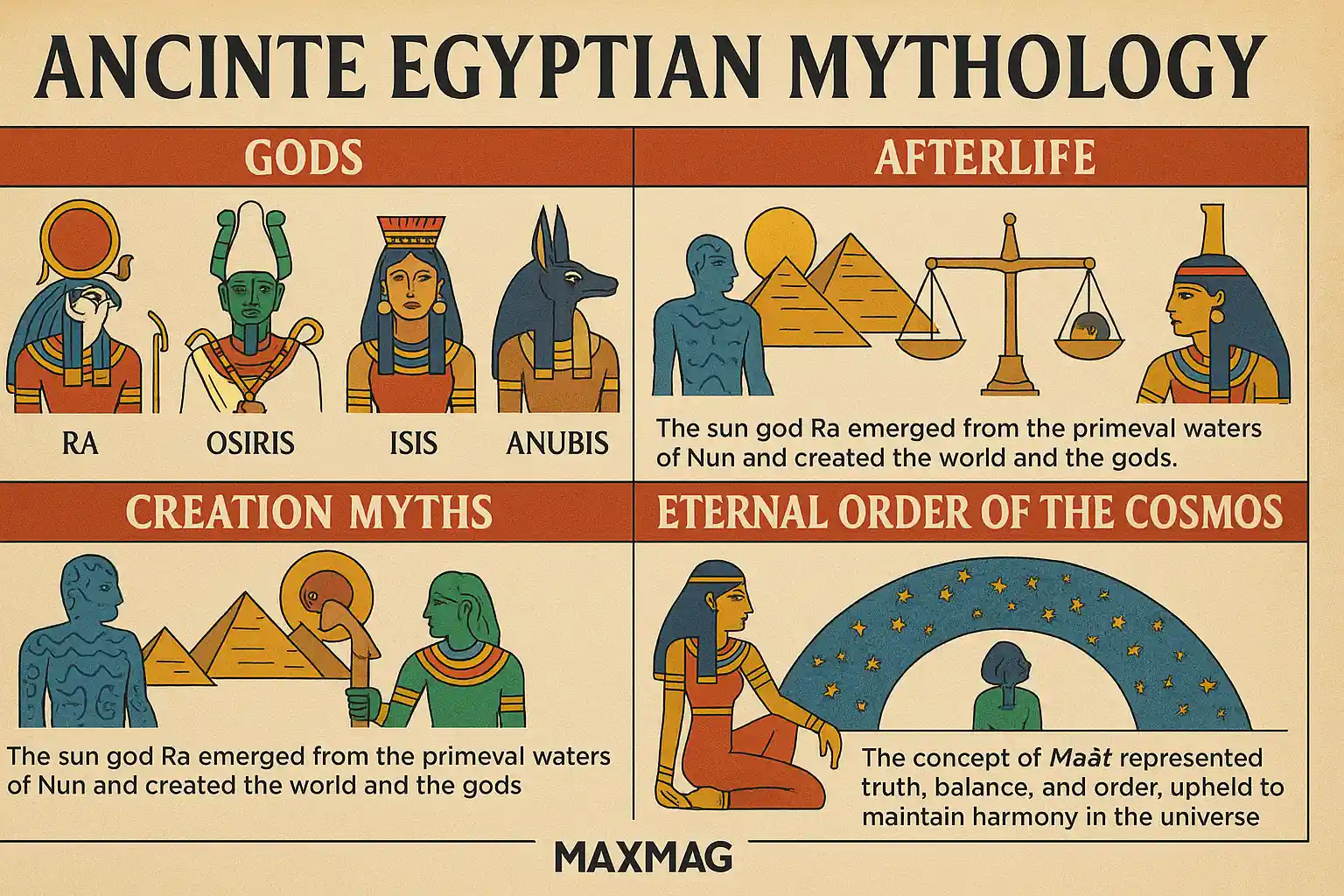
Lesser-Known Deities and Local Cults
Beyond the central gods, ancient Egyptian mythology includes many regional deities:
-
Khnum: God of the Nile source and creator of human bodies on his potter’s wheel.
-
Taweret: A hippopotamus goddess protecting women in childbirth.
-
Bes: A dwarf-like deity of music, laughter, and family protection.
-
Seshat: Goddess of wisdom and architecture, often paired with Thoth.
-
Montu: Theban god of war, invoked in battle and victory ceremonies.
Many households had shrines to local deities, and personal devotion played a large role in Egyptian religious life.
Mythology’s Influence on Science and Art
Myths shaped more than ritual—they influenced astronomy, medicine, music, and literature. The movement of stars was interpreted through myth: constellations like Orion (associated with Osiris) and Sirius (Isis) marked the agricultural calendar.
Medical texts called upon divine healing, invoking Sekhmet and Isis for remedies. Music and hymns recited mythic narratives, while scribes learned to write by copying religious texts—myth was the foundation of all knowledge.
Comparing Ancient Egyptian and Greek Mythologies
Both Egyptian and Greek mythologies emerged from deeply religious societies and feature gods with human traits, rivalries, and cosmic roles. However, Egyptian myths tend to emphasize cyclical time and moral cosmic order (Ma’at), while Greek myths focus more on individuality, fate, and tragedy.
To explore the fascinating parallels and family structures of deities across cultures, see The Greek Mythology Family Tree, where the genealogies of gods like Zeus, Hades, and Athena mirror the intricate lineages of Ra, Osiris, and Horus.
FAQ: Ancient Egyptian Mythology
Q1: What is ancient Egyptian mythology?
Q2: Who are the central deities in Egyptian mythology?
Q3: How does Egyptian myth explain the afterlife?
Q4: What role does Ma’at play in mythology?
Q5: How are myths preserved in Egyptian architecture?
Q6: Where can I learn more about Egyptian myths?

